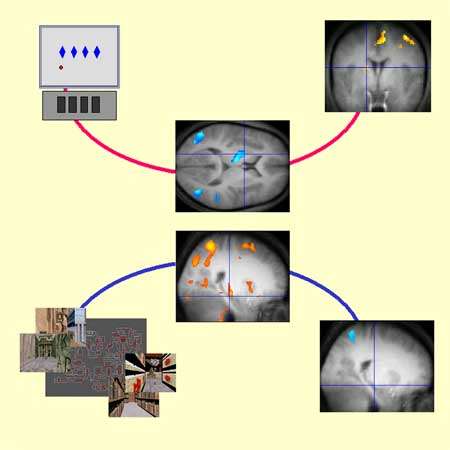Asleep or awake we retain memory
Sleeping helps to reinforce what we’ve learned. And brain scans have revealed that cerebral activity associated with learning new information is replayed during sleep. But, in a study published in the open access journal PLoS Biology, Philippe Peigneux and colleagues at the University of Liege demonstrate for the first time that the brain doesn’t wait until night to structure information. Day and night, the brain doesn’t stop (re)working what we learn.
Taking advantage of the new opportunities offered by 3 Tesla’s functional Magnetic Resonance Imaging (fMRI)(*), Philippe Peigneux et al. recorded (or scanned) the cerebral activity of volunteers while they performed a ten-minute auditory attention task every half hour in two sessions spaced out over a few weeks. In each of these sessions, during the half hour between the first two scans of the attention task, the volunteer was given something new to learn.

A third scan was then performed after a half-hour rest. During one of the two sessions, the volunteer memorized a route in a virtual city he or she was exploring on a computer. This spatial navigation task is known to be dependent on the hippocampus, a cerebral structure that plays a vital role in learning. The other session was devoted to acquisition by repetition (or procedural learning) of new visuomotor sequences. For this task, it wasn’t necessary that the subject be aware of what he or she was learning, and its success depends mainly on the integrity of the striatum and the related motor regions.
Compared with the first scan, the cerebral activity during the second and third scan of the auditory attention task was systematically modified by the kind of learning experience that took place between the first and second scans. Moreover, this post-learning activity evolved differently over time depending on the type of learning, and the subjects’ recall abilities. These elements suggest active processing of the newly formed mnemonic traces, which could occur at the same time as other cognitive tasks.
More generally, this study from the ULg Cyclotron Research Centre demonstrates for the first time that the human brain does not simply put newly acquired information in standby until there is a period of calm or sleep to strengthen them. Rather, the brain continues to process them dynamically as soon as the learning episode has ended, even if it has to face an uninterrupted series of completely different cognitive activities.
(*) In 2003, the University of Liège acquired this high performance magnetic resonance imaging apparatus in support of the research being carried out at the University of Liège Cyclotron Research Centre (www.presse.ulg.ac.be/communiques/irmtesla.html).
Citation: Peigneux P, Orban P, Balteau E, Degueldre C, Luxen A, et al. (2006) Offline persistence of memory-related cerebral activity during active wakefulness. PLoS Biol 4(4): e100. http://dx.doi.org/10.1371/journal.pbio.0040100
Source: PLoS Biology















